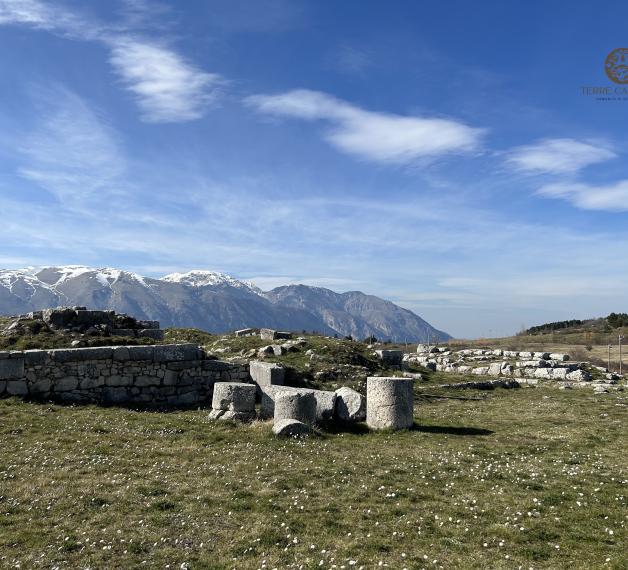One of the highest villages on the Abruzzo Appenine, Montenerodomo makes an integral part of Maiella National Park, which became Unesco Global Geopark in 2021. Nature and history have been very generous to Montenerodomo since the distant era of Carricini and Romans. Its Sanniti megalithic walls, Roman archaeological legacy and the enchanted landscape with the Maiella massif join nature and culture in its unique heritage. Moreover, the finds of different historical periods up to the Middle Ages collected in the Juvanum Museum and in its romantic isolated area with the forum, acropolis, theatre, baths, temples and the remains of the Cistercian abbey of S. Maria in Palazzo, make Montenerodomo a “Land Art” gallery, surrounded by gorgeous landscapes embraced by Maiella, charming in any season of the year.
The modern centre of the village, which was bombed and destroyed during World War II, keeps a few remains, near the Parish church of San Martino e Santa Giusta, of the noble mansions of the most eminent families of Benedetto Croce (1866 – 1952) and Giuseppe De Thomasis (1767 - 1830). Since the mid 1400 they have been for centuries the wealthiest and most active in the village best interest, for social justice in Abruzzo and for the history and culture of the nation.
It is exactly to Croce that the main square at the heart of Montenerodomo is dedicated; located in the highest part, it hosts the most important buildings of civil, social and religious life: the Town Hall, the War Memorial and the Parish Church. Lower is the little church of San Vito, dating to mid-1700 and once the burial ground of Croce family; the imposing megalithic walls are near the pinewood, a spectacular proof the Sanniti technical skills.
Since over two thousand years the archaeological antiques combine with current abundant green of Montenerodomo, with its cultivated plots, grazing lands, tratturi, the gentle slopes and water sources; they jointly tell stories of warriors, noble landowners, men of letters, philosophers, shepherds and farmers of whom Sanniti were the ancestors.
[Credits | Text: Ottavio Di Renzo De Laurentis | Translation: Mirella Rapa | Voice and music: Studio Qreate | Photo: Laura Di Biase]



